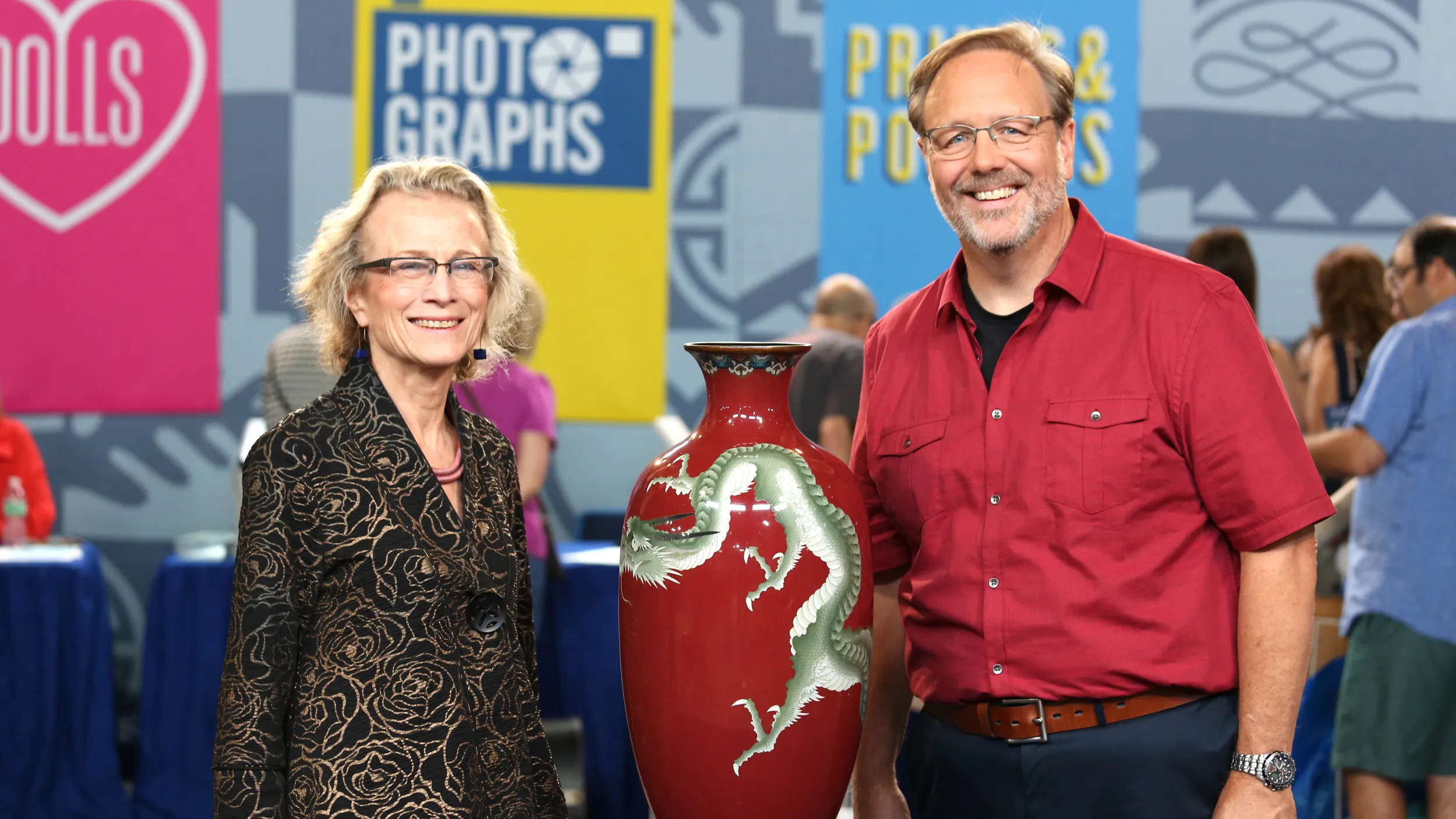GUEST: It belonged to my grandfather on my dad's side of the family. My dad was the eldest and it was passed onto him at some point, and then I think my father thought that I might be musically inclined, as a child, and that's how I came into possession of it. And unfortunately, I've never learned to play it. I played on it when I was about five, but never knew how to play it.
APPRAISER: It's a banjo ukulele. It was made in 1927, which was pretty much the peak of the ukulele craze.
GUEST: All right.
APPRAISER: And Bacon & Day, the company that made it, was one of the premier manufacturers of Jazz Age banjos during the 1920s and '30s. Bacon & Day was in Groton, Connecticut. A lot of people would say, "What's a ukulele banjo?" But it served a real purpose, because ukuleles are wonderful, but they're not very loud. So if you wanted to play a ukulele and you needed to be heard in an outdoor setting or with louder instruments, like horns or guitars and pianos and things, making it into a banjo was the perfect solution. This was a ukulele you could hear across the auditorium, not just across the room. This is one of the highest-quality ones. It's not highly decorated, but it's made just like their tenor Bacon & Day Silver Bell banjos, which were world-famous at the time. And it has all the same features that those Jazz Age four-string banjos had. So for instance, it has, inside the head, there's a special spun tone ring, which was their patented Silver Bell tone ring. And then the resonator flange, with the little F-hole-shaped...
GUEST: Right.
APPRAISER: Everything about it is scaled down to this ukulele size, so that instead of being a 12-inch head or 11-inch head with a larger resonator, everything was made in miniature. And it could be used with either gut strings or steel strings.
GUEST: Okay.
APPRAISER: Which was another advantage over ukuleles, which could only be strung with gut. This is a Number 3.
GUEST: Okay.
APPRAISER: So it's kind of in the middle of the range of the Silver Bell ukulele banjos that they did. But it's really professional-grade instrument. It was expensive at the time, and they're highly desirable now for people that take banjo ukulele seriously.
GUEST: Huh!
APPRAISER: And in a specialty shop that deals with vintage instruments of this type, it would fetch about $2,500.
GUEST: That's surprising to me. I think I thought it might be around $500. But I never dreamed... it could be that much.
APPRAISER: A big part of it is that all of its original parts are there, including the original hard shell case.
GUEST: Okay.
APPRAISER: So it has the original geared, geared tuners. And it doesn't seem like anything's been lost or altered in any way. It has some wear.
GUEST: Right.
APPRAISER: But it's what we call honest wear.
GUEST: Yeah.
APPRAISER: That people expect to see.











